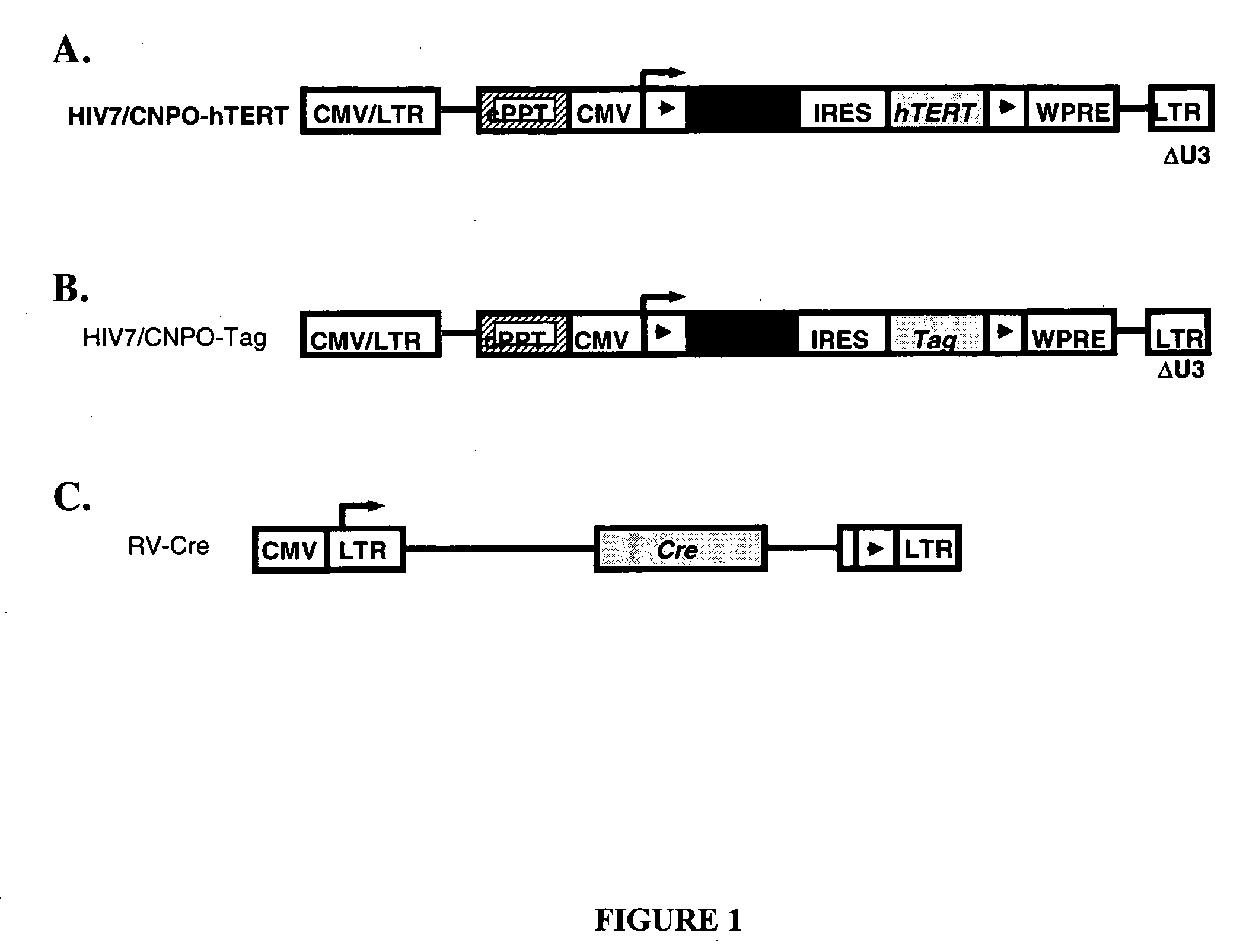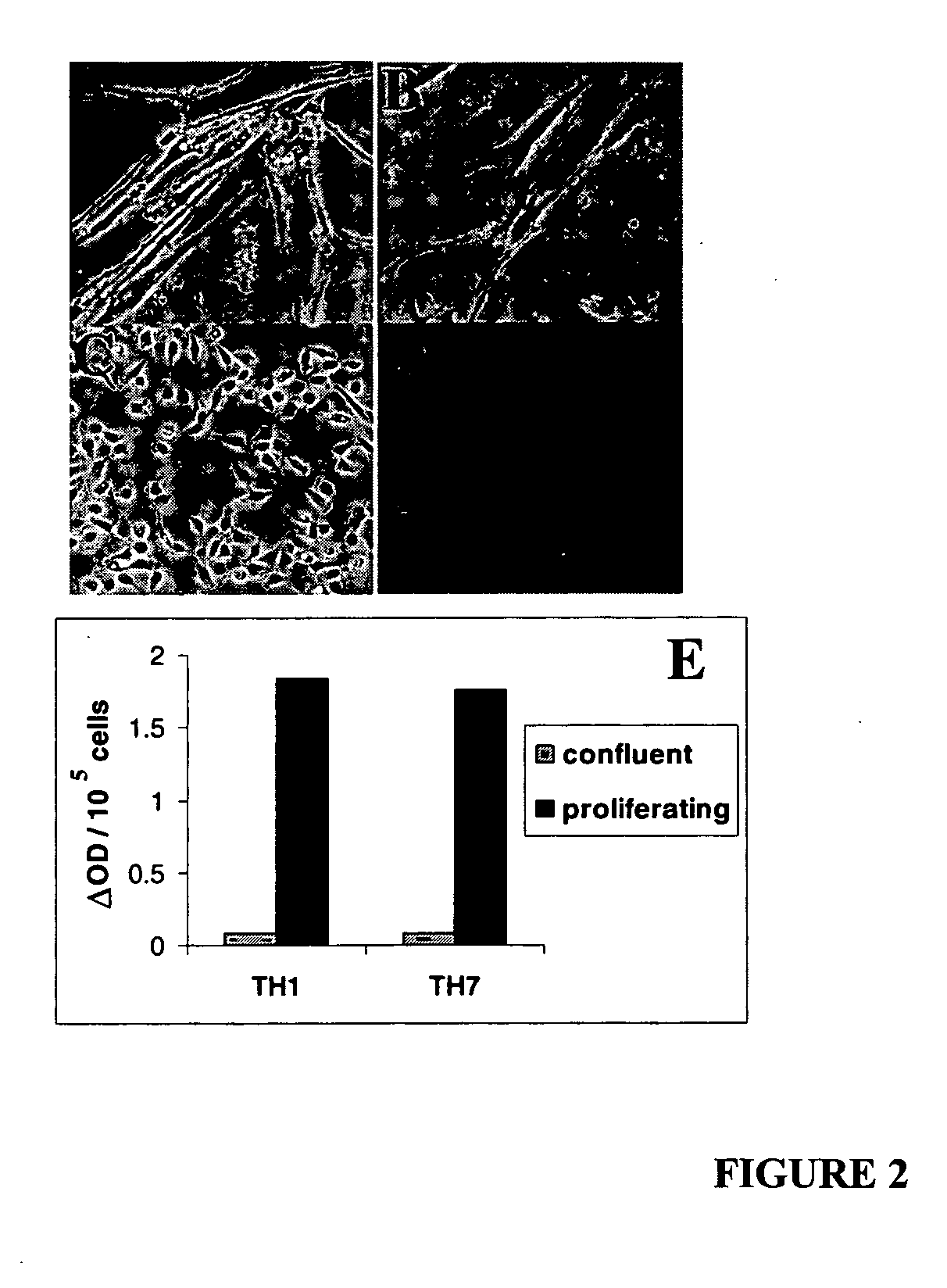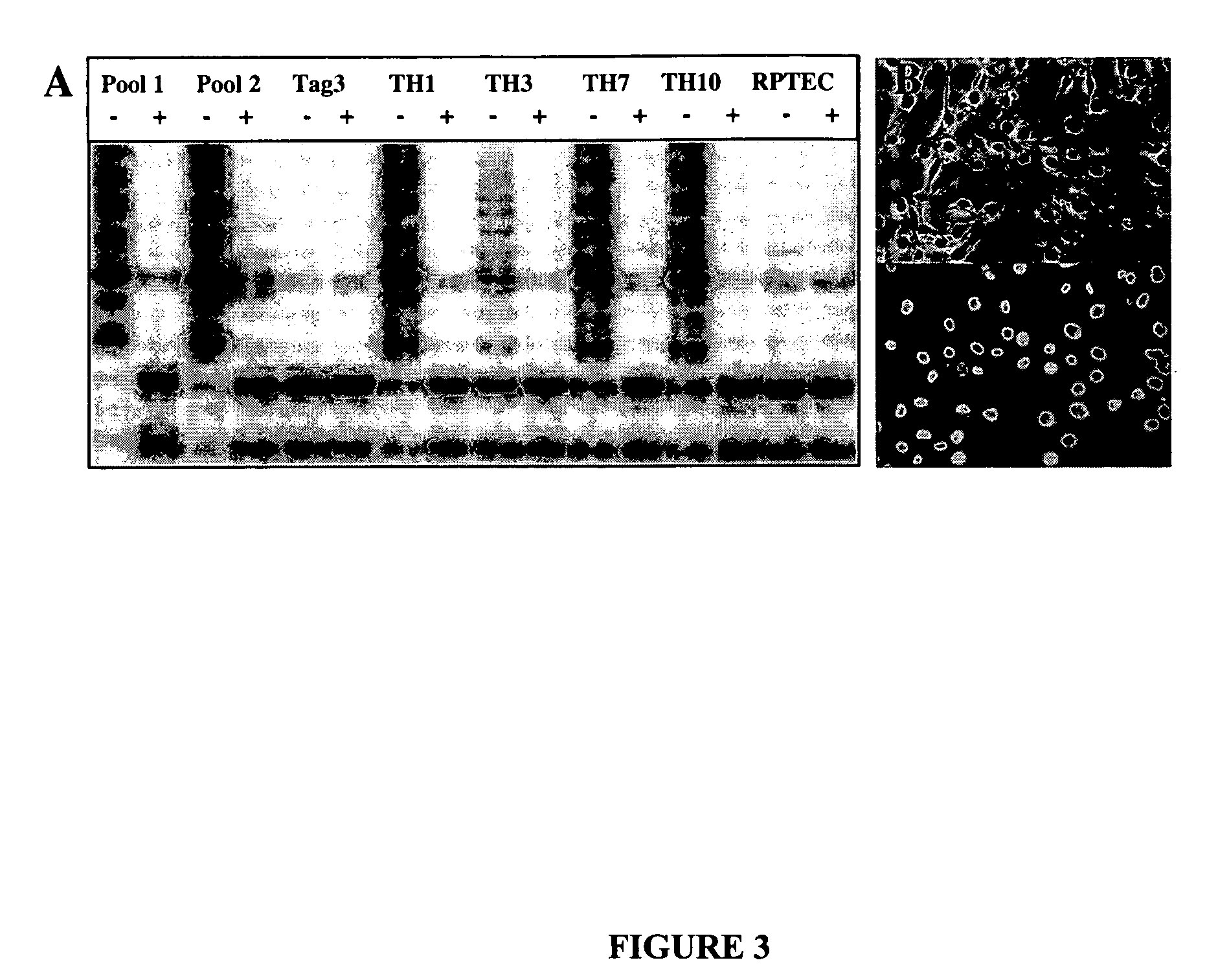Reversible immortalization of human renal proximal tubular epithelial cells
a technology of renal proximal tubular epithelial cells and immortalization, which is applied in the field of cell immortalization and renal cell function, can solve the problems of limited proliferation potential of primary human cells, which precludes their use in many applications, and methods come with drawbacks of their own
- Summary
- Abstract
- Description
- Claims
- Application Information
AI Technical Summary
Benefits of technology
Problems solved by technology
Method used
Image
Examples
example 1
Generation of HIV-Based Vectors Containing hTERT or SV40 Tag
[0045] Two HIV-based vectors containing the neoR gene together with either SV40 Tag or hTERT cDNA were generated. Both vectors contained a gene cassette flanked by two loxP sites and placed under the control of the CMV IE promoter.
[0046] pHIV7 / CNPO was constructed by inserting a 2,400-bp Notl / HindIII fragment into the unique BamHl site of pHIV7 (Kowolik 2000). The 2,400-bp insert contained the neomycin resistance (neoR) gene and an internal ribosome entry site (IRES) flanked by two loxP sites controlled by the immediate early (IE) gene promoter of cytomegalovirus (CMV). pHIV7 / CNPO-hTERT (FIG. 1A) was constructed by inserting a 3,490-bp EcoRI / Sall fragment containing the cDNA sequence for hTERT into the BamHl site of pHIV7 / CNPO. pHIV7 / CNPO-Tag (FIG. 1B) was constructed by inserting a 2,170-bp BamHl fragment containing the cDNA sequence for SV40 Tag into the BamHI site of pHIV7 / CNPO.
[0047] HIV vectors were produced from 29...
example 2
Generation of Immortalized RPTEC Clones Expressing hTERT and SV40 Tag
[0048] Primary human renal proximal tubule epithelial cells (RPTEC) were purchased from Clonetics (Walkersville, Md.) and maintained in Renal Epithelial Cell Growth medium (REGM). These primary human RPTECs underwent replicative senescence at passage seven. At this point, RPTECs stopped dividing and became elongated (FIG. 2A). Expression of the senescence specific biomarker β-gal was detectable in many of the elongated cells (FIG. 2B).
[0049] To establish immortalized clones, RPTECs from the third and fourth passages were transduced with both HIV-7 / CNPO-Tag and HIV-7 / CNPO-hTERT vectors at a multiplicity of infection (MOI) of one, followed by selection with G418. NeoR clones were picked and expanded. The immortalized cells continued to proliferate for more than 100 passages (>2 years) in culture, and the doubling time for these cells lines was in the range of 40 to 48 hours. Cells from one of these clones at passag...
example 3
Morphological Characteristics of Immortalized RPTECs
[0054] Individual clones TH1 and TH7 were selected for further study. They grew as a monolayer with a cobblestone appearance (FIG. 4A). Multiple “dome” formation, which is one of the characteristics of primary RPTECs grown in culture (Dreher 1992), was consistently observed in a confluent culture (FIG. 4A, arrows, and 4B). Formation of these structures is likely due to transepithelial transport of water and solutes trapped between the cultured cell layer and the culture dish. The presence of domes in confluent TH1 and TH7 cultures suggests that the transportation function for water and solutes remains intact in the immortalized cell lines. Ultrastructural examination of the immortalized cells by electron microscopy indicated the presence of short and long microvilli at their apical surface, facing the culture medium (FIGS. 4C-4F). The density of microvilli remained relatively unaltered irrespective over extended passages (FIGS. 4E...
PUM
| Property | Measurement | Unit |
|---|---|---|
| pH | aaaaa | aaaaa |
| doubling time | aaaaa | aaaaa |
| doubling time | aaaaa | aaaaa |
Abstract
Description
Claims
Application Information
 Login to View More
Login to View More - R&D
- Intellectual Property
- Life Sciences
- Materials
- Tech Scout
- Unparalleled Data Quality
- Higher Quality Content
- 60% Fewer Hallucinations
Browse by: Latest US Patents, China's latest patents, Technical Efficacy Thesaurus, Application Domain, Technology Topic, Popular Technical Reports.
© 2025 PatSnap. All rights reserved.Legal|Privacy policy|Modern Slavery Act Transparency Statement|Sitemap|About US| Contact US: help@patsnap.com



